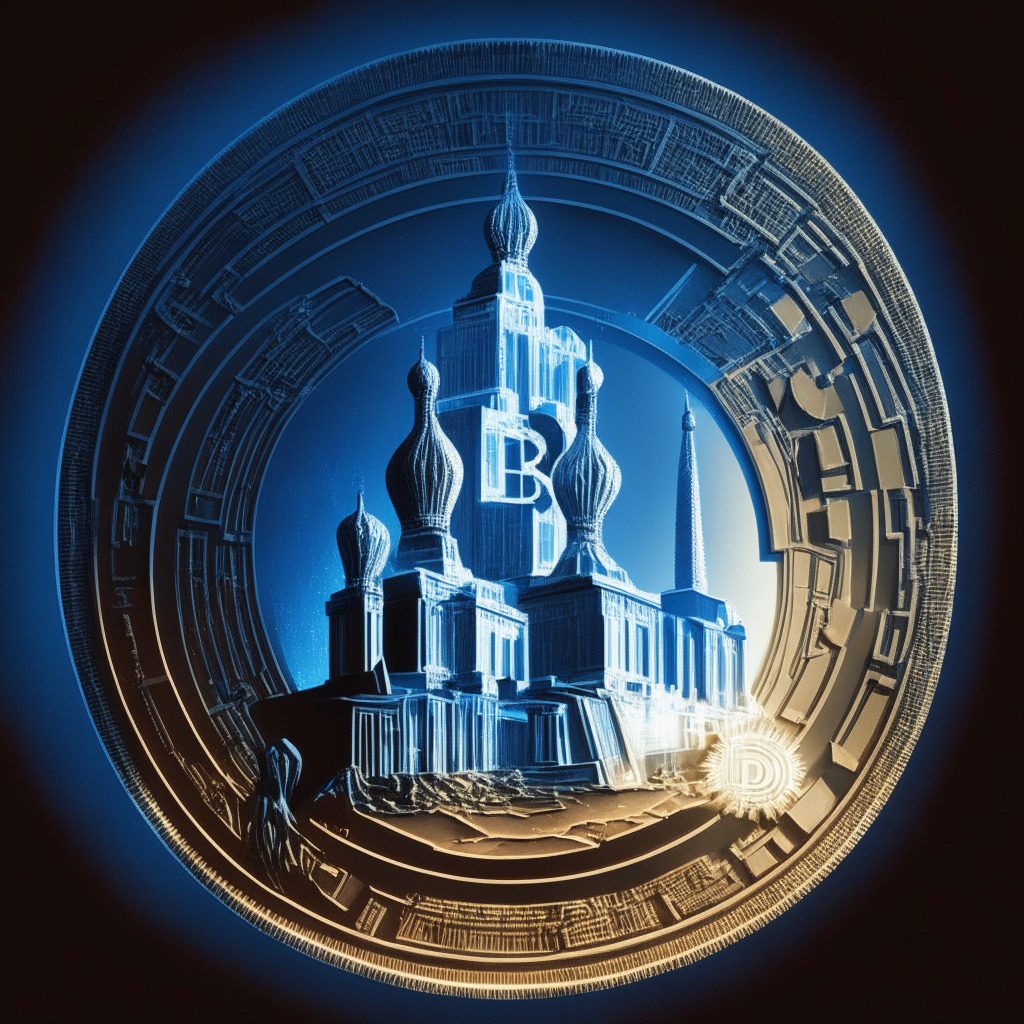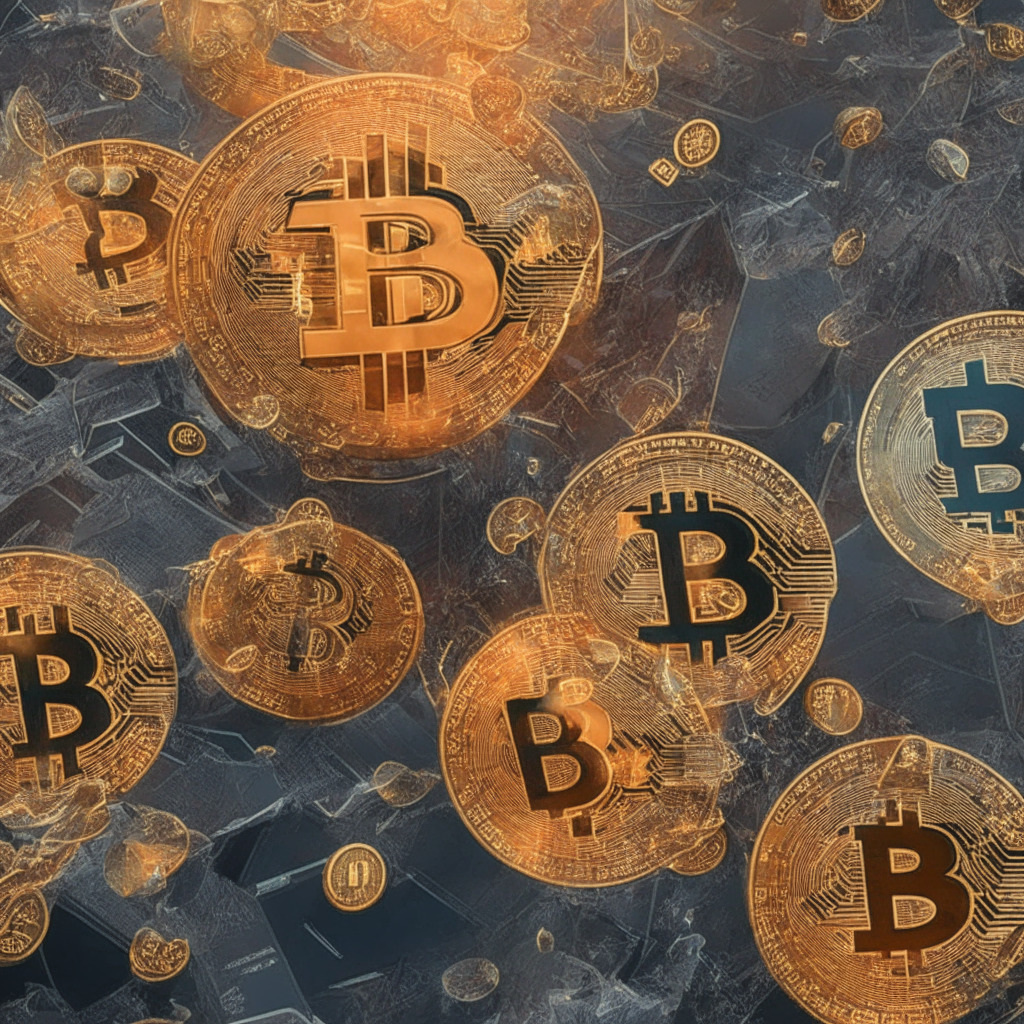“China’s digital yuan experienced increased usage at the Hangzhou Asian Games, where athletes interacted with the new technology. New language features were introduced, and the currency is linked with Hong Kong’s Fast Payment System. Overseas visitors can now open a digital yuan wallet using an overseas mobile phone number, and can ‘top up first, and use later’, for smoother transactions.”
Search Results for: Industrial Bank
Deus X Capital: Harnessing the Fourth Industrial Revolution for Equitable Financial Ecosystem
“Deus X Capital, a new investment firm with a $1 billion pool, aims to become a major investor and company builder within the digital asset and fintech sphere. Led by seasoned executives Tim Grant and Stuart Connolly, the firm is set to navigate through the volatile crypto landscapes, leveraging their expertise in both traditional and digital asset management.”
Exploring Russia’s Pivot to Crypto: Boosting Trade Ties or Cannibalizing Traditional Banking?
Russian entrepreneurs aim to use “digital assets” and a “unified digital currency” for trade with BRICS and other nations. The idea of utilizing digital financial assets (DFAs), which may encompass digitized commodities, CBDCs, digital securities, cryptoassets, and stablecoins, in international payments is garnering attention. The possibility of creating a unified digital currency for cross-border transactions is also being evaluated.
The Intriguing Prologue of Central Bank Digital Currencies: Boon or Bane?
Central banks worldwide are exploring Central Bank Digital Currencies (CBDCs): digital versions of their currency eliminating intermediaries. This development claims cost-saving potential and policy-making tools but carries risks. Without private banking, government surveillance increases, the market economy may stagnate, and individual protections decrease. Politically-motivated fund allocation also becomes possible. Therefore, while CBDCs may appear attractive, comprehensive discussions around the dangers and ethical use are needed.
Harnessing the Metaverse: The Future of Banking, Blockchain & Crypto – A Deeper Look
“Bank of America has implemented the world’s first VR and AI training for banking employees in the metaverse. Cryptocurrencies like Ethereum are preferred by some businesses for their fluidity and decentralisation against traditional banking. However, market volatility and security threats remain a concern. Tech giant Siemens plans to build an ‘industrial metaverse’, but the ecological impact of such advancements is under scrutiny.”
South Korea’s STO Market Boom: What Lies Ahead for Banks and Investors by 2030
South Korea’s security token offerings (STO) market could reach $287 billion by 2030, with major banks preparing to enter this growing market. Recent government policy announcements regarding STO regulations have prompted a positive response from the banking sector, resulting in rapid market growth and the formation of an STO alliance among major banks.
Digital Yuan Expansion in Chinese Banking: Pros, Cons, and the Future of CBDCs
Chinese banks plan to expand the use of the digital yuan for purchasing wealth management products, allowing customers to connect their central bank digital currency (CBDC) holdings with securities accounts. This move strengthens the digital yuan’s practical applications in the financial industry and continues its ongoing rollout, but potential adverse effects on privacy, freedom, and the global economy remain to be seen.
Banking Unrest Boosts Bitcoin and Ethereum: Analyzing Market Pros and Cons Amid Economic Shifts
Bitcoin and Ether experienced a 2.6% and 2.5% increase respectively amidst banking unrest and falling shares of regional banks. With weaker labor data and potential inflationary pressure, cryptocurrency markets offer attractive growth outlooks and investment opportunities as uncertainties loom in traditional banking sectors.
Exploring China’s Deepening Embrace of the Digital Yuan: Opportunities and Concerns
“Several Chinese banks are considering incorporating the digital yuan, or e-CNY, into their services. Industrial Bank has introduced a CBDC-powered service for bulk commodity spot clearing. More banks are joining People’s Bank of China’s pilot programme, signalling a significant shift in China’s financial landscape.”
Leveraging China’s Digital Yuan for Green Financing: Pros, Cons, and Future Potentials
Zhongshan Jewelly Optoelectronics Technology, a Guangdong-based firm, has secured over $276,000 from China’s first digital yuan-powered green finance loan. Using the digital yuan offers cost-effective, efficiency for enterprises, with real-time fund transfer and no incurring handling and service fees. Meanwhile, its traceability can prevent misappropriation of green funding loans.
Navigating Economic Uncertainly: Bitcoin and Market Stability Amidst Rising Inflation
“U.S. economy experiences instability with personal consumption expenditure inflation index rising by 3.5%. U.S. Treasuries depreciated by $1.5 trillion due to recent rate hikes, raising investor concerns about assets like Bitcoin and trading market’s ability to weather rising interest rates.”
Inflation, Interest Rates, and the Unpredictable Balance: Unraveling the Federal Reserve’s Challenges
The recent data from U.S. Bureau of Economic Analysis shows a decrease in the core PCE inflation index to 3.9% in August, leading to positive investor sentiment. However, potential monetary policy shifts and hints of rate hikes to control inflation cause market sensitivity. Increasing energy prices and inflation uncertainties further complicate Federal Reserve’s monetary policy considerations.
Leveraging E-CNY and Smart Contracts: China’s Strides in FinTech Innovation versus Security Challenges
“The Chinese financial sector is embracing smart contracts powered by its digital yuan, e-CNY, in a bid to revolutionize businesses. It hopes to incorporate advancements like digital RMB prepayments and smart contract tech from Bitcoin, crypto, and blockchain fields. But centralization may raise trust and security issues.”
Digital Yuan: China’s Leap Into Blockchain Salary Payments and Its Global Implications
A growing number of Chinese companies are switching to digital yuan for salary payments. The Zhongkai High-tech Industrial Development Zone, in partnership with the ICBC, has become the first city company to pay its employees, including CCP officials, in digital yuan. This initiative encourages digital yuan adoption and broadens its application in the public sector, helping to tackle the longstanding US dollar dominance.
Navigating Digital Ruble Tokens: Russia’s Potential Game-Changer with Associated Risks
The Central Bank of Russia has limited digital ruble wallets to a maximum of 300,000 rubles per month to maintain market stability. However, suggestions have been made to remove this cap for non-Russian investors to facilitate foreign investment in Russia and simplify the purchase of Russian digital financial assets. This decision reflects the growing adoption of digital currencies globally.
Future of Transactions: A Russian Salon Charts New Course with Digital Ruble Payment
A beauty salon in Yekaterinburg, Russia, recently accepted its first digital ruble payment, pioneering the use of Russia’s Central Bank Digital Currency (CBDC) in the commercial sector. This case has sparked optimism that digital currency could offer unique payment solutions, even in areas with limited or no internet access.
Fostering Global CBDC Adoption: China’s Dynamic Push at the Asian Games
“China is pushing for digital yuan adoption at the upcoming Asian Games. This event aims to showcase the central bank digital currency (CBDC) on an international platform. Attendees within pilot zones can buy tickets using the official CBDC app, marking a first for major sports events in China. This initiative is seen as a potential accelerator for broader digital currency adoption.”
China’s Giant Leap: JD.com’s Digital Yuan Revolution for Supply Chain Financing
“JD.com and ICBC are developing a digital yuan using smart contract technology for supply chain financing, enhancing verification, risk identification, and credit guarantees for SMEs. The solution, fostering trust among financial institutions, aims for wider digital yuan acceptance and marks a significant moment in streamlining financial processes.”
Crypto Correction and Market Downfalls: The Bittersweet Symphony of Financial Growth
The cryptocurrency market, including Bitcoin and Ether, is in a ‘significant downtrend,’ following last week’s sudden drop. This mirrors a downwards trend in traditional markets such as the Nasdaq Composite and S&P 500. Despite this, the economy continues absorbing policies from the past 16 months without visible harm to spending or job creation.
Crypto Crash: Analyzing the Recent Market Downturn & Its Relations with Global Economy
Cryptocurrencies recently experienced a shocking mid-afternoon dip, with altcoins like Ripple, Dogecoin, Polkadot, Polygon, and Uniswap losing over 4%. This downturn may be linked to strong U.S. retail sales data, which sparked fears of increased central bank tightening.
Gearing up for the Digital Ruble Era: Russia’s CBDC Revolution Amid Economic Sanctions
Russia’s central bank digital currency (CBDC), the digital ruble, is entering a testing phase with real-world trials through 13 banks. This advancement could potentially sidestep Russia’s current financial challenges and reshape the nation’s digital currency future, despite risks such as cyber threats and potential declines in physical currency demand.
Unpacking the AI Market Boom: Navigating Investment Trends Amidst Tech Revolution
“Morgan Stanley recently highlighted the transformative potential of AI across various industries, predicting a profound digital alteration and considering it a primary secular investment trend for the decade. Despite fears of a tech bubble, the AI index’s continuous growth and its ‘stickiness’, or potential to retain user attention, strengthen AI’s prospects.”
Fed’s Aggressive Interest Cycle Closure: Impact on Crypto Market and Future Predictions
“While investment banks predict that the aggressive interest rate cycle initiated by the U.S. Federal Reserve may draw to a close, this doesn’t necessarily mean a return of the 2020-21 bull market. Regulatory intervention, rising borrowing costs, tightened credit standards and other economic factors complicate forecasts. However, as inflation is expected to stay on target, a halt to further rate hikes seems plausible.”
Navigating the Crypto Course amidst the United States’ Macroeconomic Shocks
The crypto market closely watches upcoming U.S macroeconomic events. Despite a favorable swing in the CPI, the US central bank sticks to hiking the interest rate. The hawkish financial stance affects crypto prices, increasing investor concerns about central bank overreach. Other significant influences include retail sales, industrial productivity, home sales, and weekly jobless claims data.
Navigating Crypto Volatility and Economic Optimism in a Changing Financial Landscape
“Bitcoin and other digital assets’ responses to global financial changes highlight a likely significant surge by 2023. Notable financial giants are entering the Bitcoin ETF sphere, triggering fluctuations. Amid worldwide central bank interventions and a potential influx of traditional firms, even in bear market conditions, there’s a burgeoning acceptance of crypto in mainstream finance.”
USDT Stablecoin: Uncovering Chinese Backing and the Quest for Transparency in Crypto
Documents from the New York Attorney General’s Office reveal Tether’s USDT stablecoin was backed by Chinese securities, contradicting previous denials. Tether held foreign securities, including Deutsche Bank and Barclays Bank, to support reserves. The findings prompt questions about USDT’s safety and legitimacy, and emphasize the importance of transparency in the crypto industry.
Revelations on Tether’s Reserves: Chinese Securities, Stability & Regulatory Scrutiny
Tether Holdings Ltd. is under scrutiny as findings reveal it may have held securities issued by Chinese firms in its reserves backing USDT stablecoin. Regulators question the underlying assets providing USDT’s stability, raising concerns about potential regulatory risks and the stablecoin’s overall reliability.
Chinese Securities, Stablecoin Reserves & Media Outlets: Tether’s Reputation at Stake
Tether addresses reports of backing USDT with Chinese securities, stating the cited materials are outdated and their exposure to Chinese commercial papers was liquidated last year. The company emphasizes the importance of accurate and balanced information for the healthy development of the crypto industry.
Tether’s Chinese Securities Exposure: Unveiling the Mystery and Its Market Impact
Newly disclosed documents reveal that Tether Holdings Ltd., issuer of the largest stablecoin USDT, previously held reserves in Chinese company-issued securities, short-term loans to Chinese companies, and a loan to crypto platform Celsius Network. Concerns arise over Tether’s $5.1 billion lending program, underpinning USDT’s importance for liquidity and stability in cryptocurrency markets.
Digital Yuan Takes Center Stage at Summer World University Games: Pros, Cons & Impact
Student athletes will use China’s digital yuan at the Summer World University Games in Chengdu, marking the first major international sports event to officially adopt the digital currency. The event aims to generate interest in digital yuan, promoting its adoption and showcasing the potential of CBDCs in future global events.
Bitcoin’s Struggle with $26,000: Regulatory Fears and Market Impact Before CPI Report
Bitcoin briefly surpassed $26,000, impacted by SEC lawsuits against Binance and Coinbase, and concerns about US monetary policy. Market participants await May’s CPI report and the Federal Reserve’s interest rate decision, while mainstream acceptance for crypto faces challenges due to decentralized finance (DeFi) being the primary gateway.
Crypto Market Downturn: SEC Lawsuits Impact and Stablecoin Balance Signals
Fellow crypto enthusiasts, a downturn in the market is linked to SEC lawsuits involving Binance and Coinbase, affecting Bitcoin, Ether, and altcoins. Stablecoin balances provide valuable insights, serving as an early indicator of buying demand and market trends.































